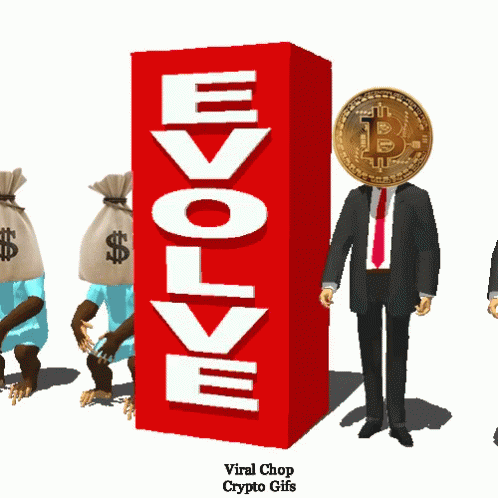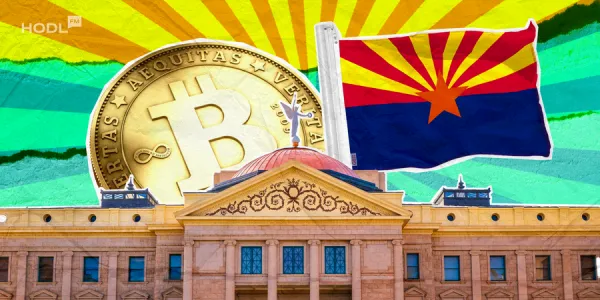In a rapidly digitizing world, the Reserve Bank of Australia (RBA) is boldly embracing the concept of central bank-issued digital currency (CBDC) as an evolution of money. Brad Jones, the assistant governor (Financial System) of RBA, passionately outlined this vision in his recent speech, titled “A Tokenized Future for the Australian Financial System.” Oh, what a speech!
This visionary stance highlights the endless possibilities and challenges that come with the digitization of assets and currency in the modern age. In this article, we’ll delve into the RBA’s perspective on CBDCs, exploring the opportunities, challenges, and the potential role of CBDCs in the future of finance.
Read more: National Australia Bank Takes a Stand Against Crypto Scams: Puts the ‘No’ in NAB!
The Evolution of Money: From Shells to Digital Tokens
Jones’ speech commences with an exploration of the fascinating journey of money throughout history. He vividly traces the development of financial instruments, highlighting how money has evolved over time. The narrative then skillfully transitions to the digital age, where the concept of tokenization comes to the forefront. In this digital era, Jones singles out stablecoins and CBDCs as significant players in the realm of tokenized money.
Stablecoins: A Step Towards Tokenized Transactions
Stablecoins, according to Jones, represent a crucial aspect of the modern financial landscape. These digital assets, often issued by well-regulated financial institutions and backed by robust assets like government securities and central bank reserves, have the potential to revolutionize tokenized transactions. They could become the go-to choice for settling digital transactions. However, Jones astutely points out the regulatory challenges associated with privately-issued stablecoins. These uncertainties could introduce underlying risks, potentially disrupting the stability of tokenized transactions. It’s in this context that the concept of Central Bank Digital Currencies (CBDCs) takes center stage.
CBDCs: The Future of Transaction Settlement
Jones makes a compelling case for CBDCs as a reliable form of transaction settlement in the digital age. Unlike privately-issued stablecoins, CBDCs come with the backing and trust of central banks. They represent tokenized forms of central bank reserves, ensuring their stability and integrity. Jones highlights that the introduction of tokenized bank deposits would be a relatively minor shift from current practices, as bank-issued deposits are already widely traded and settled across central bank balance sheets. This visionary approach suggests that CBDCs could streamline the process of settling transactions by facilitating the transfer of ES (or wholesale CBDC) balances between the payer and payee banks.

Unlocking Value: RBA’s Pilot CBDC Program
The RBA’s commitment to exploring the potential of CBDCs is not mere rhetoric. Jones shares some of the insights gained from the RBA’s pilot CBDC program. This initiative has identified numerous areas where CBDCs could create substantial value, particularly in wholesale payments. One standout advantage is the facilitation of atomic settlement in tokenized asset markets, streamlining complex transactions. Additionally, the pilot project has uncovered exciting prospects for wholesale CBDCs to complement emerging forms of privately-issued digital currencies, including tokenized bank deposits and asset-backed stablecoins.
Conclusion
Australia’s Reserve Bank is at the forefront of a digital monetary revolution, openly endorsing the idea of CBDCs as the future of money. In a world where finance is increasingly digitized, Jones’ insights reveal a vision where CBDCs provide stability, security, and efficiency in a tokenized financial landscape.
Read More on Regulations:
- UK Law Commission Gets Crypto-Savvy: Proposes Bold Changes to Recognize Crypto as Personal Property
- Blockchain Gaming: These Countries Are Ready to Rule the Crypto Playground!
By pursuing pilot programs and addressing the challenges of this innovative financial ecosystem, Australia is positioning itself as a key player in shaping the future of money.
Disclaimer: All materials on this site are for informational purposes only. None of the material should be interpreted as investment advice. Please note that despite the nature of much of the material created and hosted on this website, HODL FM is not a financial reference resource and the opinions of authors and other contributors are their own and should not be taken as financial advice. If you require advice of this sort, HODL FM strongly recommends contacting a qualified industry professional.






